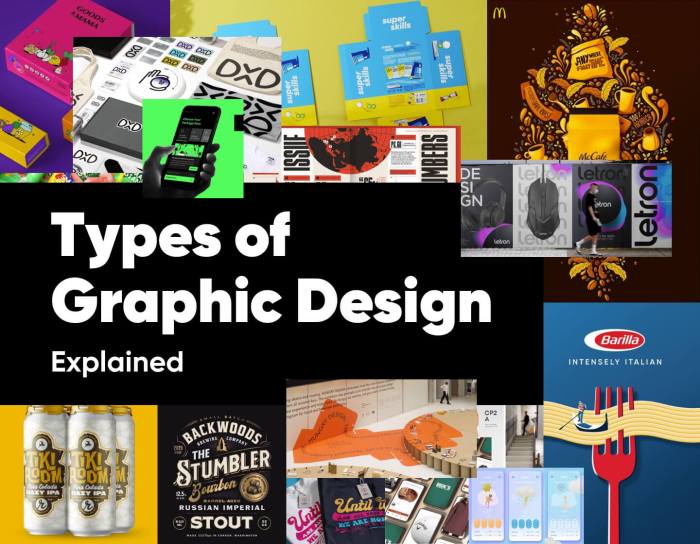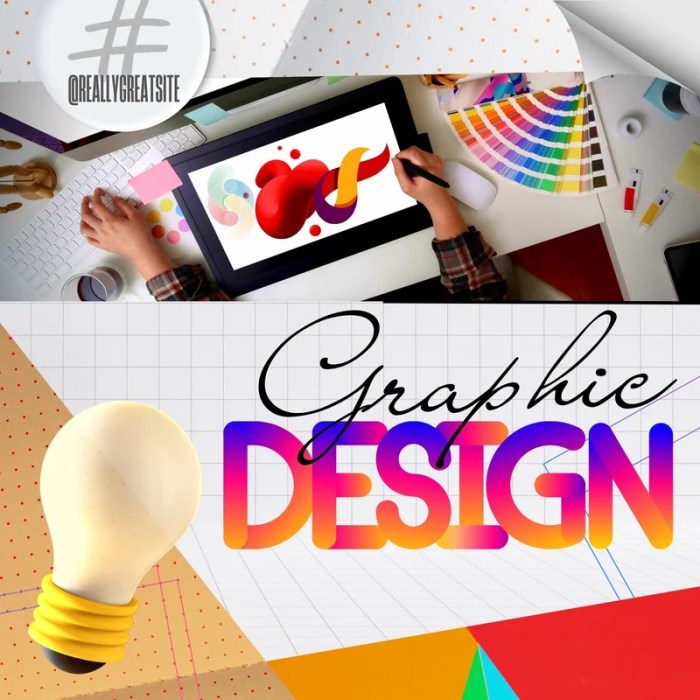Unlocking the Power of Graphic Design: A Comprehensive Guide
In today's digital age, graphic design stands as a cornerstone of effective communication, branding, and visual storytelling. Dive into this enriching exploration that delves into the nuances of graphic design, from its impact on user experience to the tools and trends shaping the industry.
As we unravel the layers of graphic design, you'll uncover the intricate blend of creativity and strategy that fuels this dynamic field.
Importance of Graphic Design

Graphic design plays a crucial role in shaping the branding and marketing strategies of businesses. It helps companies communicate their message effectively and stand out in a competitive market.
Enhancing User Experience
Graphic design enhances user experience on websites and apps by creating visually appealing layouts, easy-to-navigate interfaces, and engaging content. For example, well-designed icons and buttons can improve usability, while cohesive color schemes and typography can make information more digestible for users.
Creating Visual Identities
Graphic design is essential in creating visual identities for businesses. From logos to marketing materials, a consistent and well-designed visual identity helps companies establish brand recognition and build trust with customers. For instance, a memorable logo can instantly convey the values and personality of a brand, making it more recognizable in the market.
Elements of Graphic Design
Graphic design encompasses various key elements that work together to create visually appealing and effective communication. These elements include color, typography, layout, and imagery. Each element plays a crucial role in conveying a message to the audience in a compelling way.
Color
Color is a powerful tool in graphic design that can evoke emotions, convey meaning, and create visual interest. Designers use color theory to choose palettes that complement each other and enhance the overall design. It is essential to consider the psychological impact of colors when designing to ensure the message resonates with the audience effectively.
Typography
Typography refers to the style and arrangement of text in a design. The choice of fonts, sizes, spacing, and alignment can greatly influence the readability and visual appeal of the content. Designers use typography to establish hierarchy, guide the viewer's eyes, and convey the tone of the message.
Consistent and appropriate typography is essential for cohesive and professional-looking designs.
Layout
Layout is the arrangement of visual elements on a page or screen. It involves organizing content, images, and other design elements to create a harmonious composition. Designers use principles of visual hierarchy, grid systems, and white space to structure the layout effectively.
A well-thought-out layout can improve readability, guide the viewer's attention, and enhance the overall user experience.
Imagery
Imagery plays a crucial role in graphic design by visually representing concepts, ideas, and emotions. Images, illustrations, and graphics can enhance the message, evoke specific responses, and make the design more engaging. Designers carefully select and manipulate imagery to complement the overall design and reinforce the intended message.
Principles of Design

In addition to the key elements, graphic design is guided by fundamental principles that help designers create visually appealing and functional designs. These principles include balance, contrast, emphasis, and unity.
Balance
Balance in design refers to the distribution of visual weight in a layout. It can be symmetrical, asymmetrical, or radial, depending on the desired effect. Achieving balance ensures that the design feels stable, harmonious, and visually pleasing. Designers use elements like color, texture, and size to create a sense of equilibrium in their compositions.
Contrast
Contrast is the juxtaposition of different elements in a design to create visual interest and emphasis. By using contrasting colors, shapes, sizes, or textures, designers can highlight key elements and establish a hierarchy within the composition. Contrast adds depth and dimension to the design, making it more dynamic and engaging.
Emphasis
Emphasis is about creating focal points in a design to draw the viewer's attention and convey the most important information. Designers use techniques like size, color, typography, and placement to emphasize certain elements and guide the viewer's eye through the composition.
Effective use of emphasis ensures that the message is clear, compelling, and easily understood.
Unity
Unity in design refers to the coherence and consistency of all elements in a composition
Tools and Software in Graphic Design
When it comes to graphic design, having the right tools and software is essential to bring your creative vision to life. Professionals in the field rely on a variety of software to create stunning designs that captivate audiences. Let's explore some of the popular graphic design tools and software used by professionals and how to choose the right one based on design requirements.
Adobe Creative Suite
Adobe Creative Suite is a powerhouse in the world of graphic design, offering a range of programs such as Photoshop, Illustrator, and InDesign. Each program caters to different design needs, from photo editing to vector graphics and layout design. With a wide array of features and tools, Adobe Creative Suite is a favorite among professional designers for its versatility and industry-standard capabilities.
Canva
Canva is a user-friendly graphic design platform that is popular among beginners and professionals alike. It offers a variety of templates, fonts, and graphics that make it easy to create visually appealing designs without extensive design knowledge. Canva is great for quick projects or social media graphics, making it a convenient tool for those looking to create eye-catching visuals efficiently.
Sketch
Sketch is a vector graphics editor that is widely used by UI/UX designers for web and mobile design projects. It offers a streamlined interface and powerful design tools that focus on creating digital interfaces. Sketch is known for its ease of use and collaboration features, making it a go-to tool for designers working on digital products.Choosing the right tool ultimately depends on the specific design requirements of a project.
Whether you need to create intricate illustrations, layout print materials, or design digital interfaces, selecting the appropriate software that aligns with your design goals and workflow is crucial to achieving the desired outcome.
Trends in Graphic Design
Graphic design is constantly evolving, with new trends emerging to meet the changing needs and preferences of audiences. Let's explore some of the current trends shaping the world of graphic design today.
Minimalism
Minimalism continues to be a popular trend in graphic design, emphasizing simplicity and clean aesthetics. This approach involves using minimal elements, negative space, and simple color palettes to convey a message effectively.
Bold Typography
Bold typography is another trend that is making a statement in graphic design. Designers are using bold and eye-catching fonts to create impactful visuals that capture the audience's attention and convey a strong message.
3D Design
3D design is gaining popularity in graphic design, adding depth and dimension to visuals. This trend allows designers to create immersive and engaging graphics that push the boundaries of traditional 2D design.
Influence of Technology
Technology plays a significant role in shaping graphic design trends. Innovations like augmented reality and interactive design are revolutionizing the way designers create and engage with their audience. Brands are leveraging these technologies to create unique and interactive experiences for their customers.
Examples of Innovative Brands
- Apple: Known for its minimalist design approach, Apple consistently implements clean and simple graphic design elements across its product packaging, advertising, and digital platforms.
- Nike: Nike uses bold typography and dynamic visuals to create impactful marketing campaigns that resonate with its audience and communicate the brand's message effectively.
- Coca-Cola: Coca-Cola has embraced 3D design in its advertising campaigns, using innovative graphics to create immersive experiences for consumers both online and offline.
Closing Summary

In conclusion, graphic design emerges not just as a visual art form, but as a strategic tool that shapes perceptions, drives engagement, and sets brands apart. Embrace the possibilities that graphic design offers, and embark on a journey where creativity knows no bounds.
Questions and Answers
What role does graphic design play in branding?
Graphic design helps create a visual identity for brands, making them memorable and recognizable to consumers.
How does graphic design enhance user experience on websites?
By incorporating intuitive layouts and visually appealing elements, graphic design improves usability and overall user satisfaction.
Which popular tools are used in graphic design?
Professionals often use software like Adobe Creative Suite, Canva, and Sketch for their graphic design projects.
What are some current trends in graphic design?
Current trends include minimalism, bold typography, and the integration of 3D elements for a modern look.